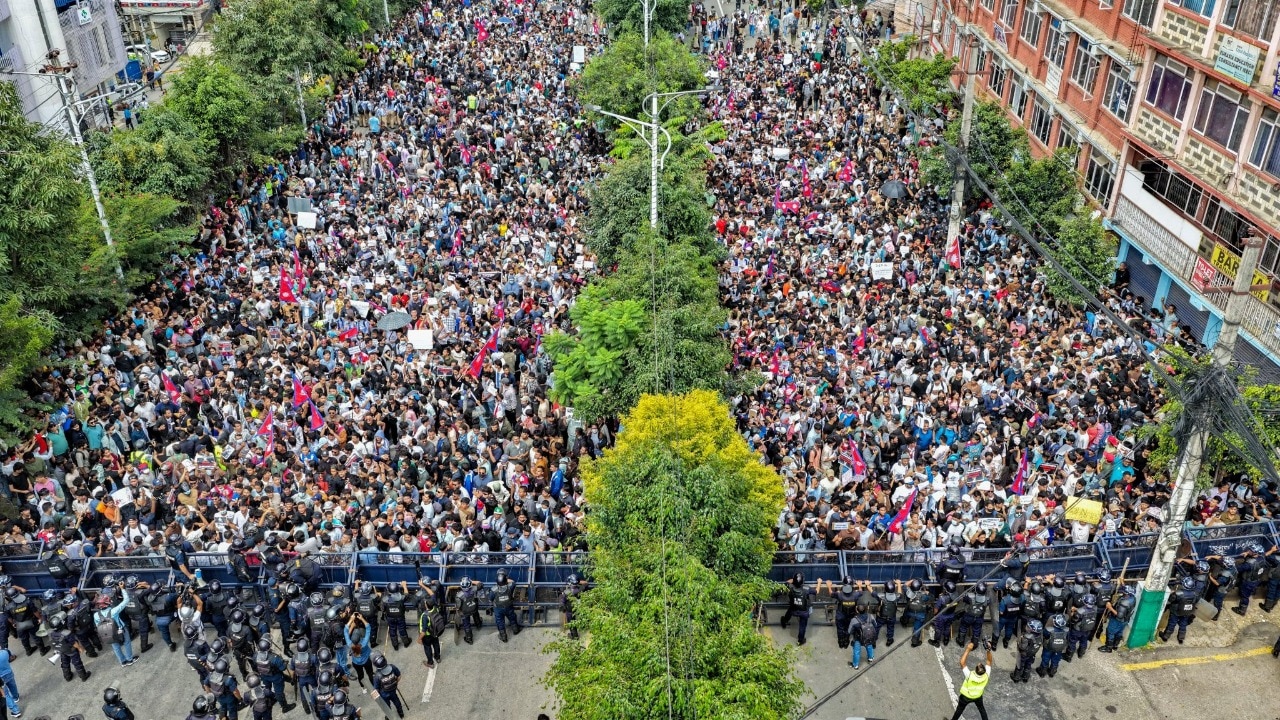
Nepal Crisis: 19 Youth Killed in Gen Z Protests, Elites’ Children Flaunting Wealth Sparks Public Fury
Casal dels Infants – Gen Z-led protests erupted across Nepal on Monday (September 8, 2025), leaving at least 19 people dead and more than 100 injured. The demonstrations, driven largely by youth who identify themselves as part of Generation Z, were sparked by a government crackdown on social media platforms and mounting frustration over widespread corruption.
The protests began peacefully but quickly descended into chaos as police responded with tear gas, rubber bullets, and eventually, live ammunition.
The Nepalese government had recently enforced a regulation known as the 2023 Social Media Usage Management Directive, which required all platforms, domestic and foreign, to register with the Ministry of Communications and Information Technology.
“Read More: Four Suspects Accused of Smuggling Children Across Mexico Border”
When tech giants such as Meta and Alphabet failed to meet the deadline, the government blocked 26 platforms, including Facebook, Instagram, WhatsApp, TikTok, and YouTube.
“Except for five platforms that have registered and two in the process, all others have been disabled,” said ministry spokesperson Gajendra Kumar Thakur.
For Nepal’s Gen Z, who have grown up entirely in the digital age, this move was not just a disruption, but a direct assault on their voice and freedoms.
Yet, the fury wasn’t just about losing access to social media. A viral online campaign with the hashtag #NepoKid further inflamed public anger. The campaign exposed the lavish lifestyles of politicians’ children, flaunted openly on social platforms, from luxury cars to international vacations, while millions of ordinary young Nepalis work grueling jobs abroad.
“Nepo kids show off their wealth on TikTok but never explain where the money comes from,” read one viral post before the ban took effect.
The stark contrast became a symbol of inequality, fueling a youth-led movement demanding transparency and social justice.
Despite the bans, protesters coordinated through VPNs and encrypted messaging apps. Hashtags like #UnbanSocialMedia were trending before the blackout, and Reddit and Telegram threads urged youth to take their digital outrage into the streets.
This movement highlighted a deep irony: even as the government attempted to silence dissent, the same technology empowered and unified a generation to fight back.
Thousands of demonstrators gathered in New Baneshwar on Monday, September 8. They broke through barricades leading to the Parliament building. Police responded forcefully. Violent clashes erupted in multiple cities, including Butwal, Bhairahawa, and Damak, the hometown of Prime Minister KP Sharma Oli.
Journalist Shyam Shrestha from Kantipur Television was hit by a rubber bullet while covering the events. Authorities claimed they used “minimal force,” but the death toll told another story.
The government imposed curfews in Kathmandu and other major cities. Authorities locked down sensitive zones such as Singha Durbar, Baluwatar, and Shital Niwas. In several locations, police reportedly used live ammunition, sparking condemnation from the National Human Rights Commission.
“The right to peaceful protest is guaranteed by the constitution. Excessive force is deeply regrettable,” said a commission spokesperson.
Unlike previous uprisings often linked to political parties, this protest was spontaneous and leaderless, yet it received widespread public support.
Veteran actors Madan Krishna Shrestha and Hari Bansha Acharya expressed solidarity. Kathmandu’s Mayor Balendra Shah also backed the youth:
“This is the voice of Gen Z. Even I may seem old to them. But their voice deserves to be heard.”
TikTok stars, musicians, and film actors joined in, urging not violence, but discipline, peace, and unity.
Analysts argue that the movement is not just about Facebook or TikTok. It’s about who controls information, and what democracy means in a digital era. The government’s heavy-handed approach is seen as out of touch with a generation that equates digital freedom with personal freedom.
“This hardline stance risks creating an underground digital black market and alienating an entire generation,” warned political analyst Sushil Manandhar.
Amid growing casualties and public outrage, Home Minister Ramesh Lekhak resigned on Monday evening. During a cabinet meeting at the Prime Minister’s residence in Baluwatar, he submitted his resignation to PM KP Sharma Oli.
The cabinet also began discussing a reversal of the social media ban, but protesters remain firm in their demand for the Prime Minister’s resignation.
This uprising marks a pivotal moment in Nepal’s political history. Generation Z is no longer content to remain passive observers. They are demanding justice, accountability, and a place at the table.
In an increasingly connected world, silencing digital voices risks igniting a far greater rebellion, one that may redefine the future of Nepal’s democracy.
“Continue Reading: Shocking! Japanese Prime Minister Shigeru Ishiba Resigns”